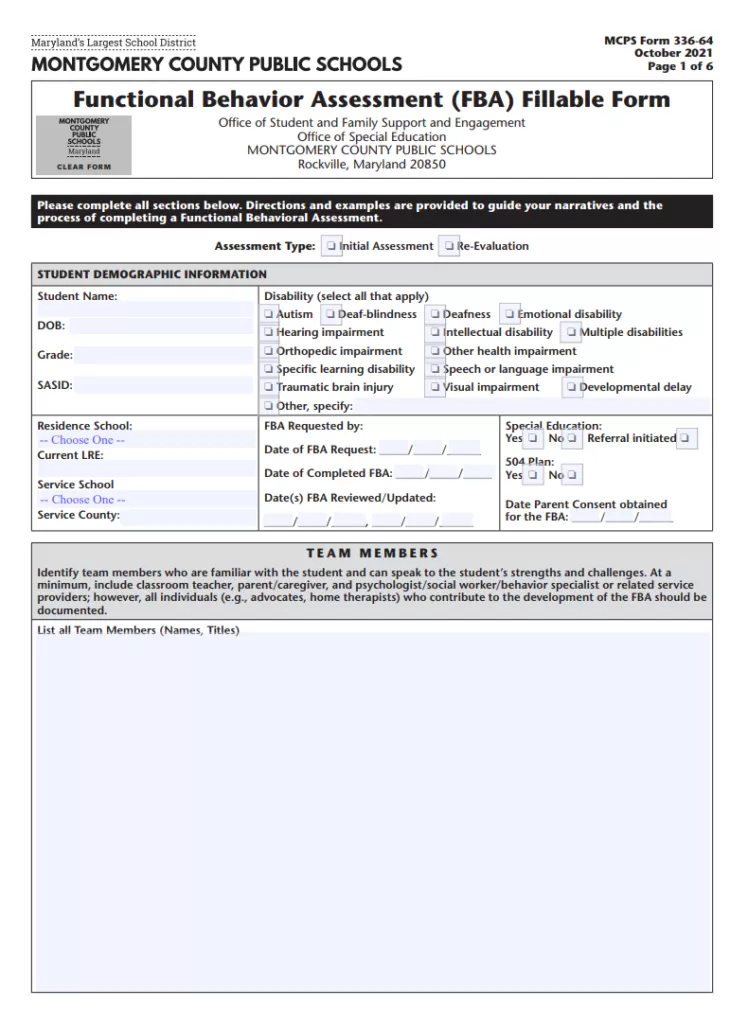A functional behavior assessment template is a process through which we can identify the problems of certain behavior and the ways through which we can eliminate or improve the source of those problems. This assessment is a method developed by applied behavior analysis, whether it may be desirable or undesirable. Moreover, this process includes the identification of antecedents and consequences. Stimulus that may have been found to be reinforcing original behavior is called antecedent and the result due to deviation from original behavior is called consequences. The timing and place of a functional behavior assessment can work with other factors to help us understand a certain behavior and can be used to verify or detect a disability in an individual.
Steps for Conducting Functional Behavior Assessment:
Step 1: Identifying the problem’s behavior.
To conduct functional behavior assessment, it is important to observe the behavior of an individual and record it down to facilitate intervention plans. Observing an individual under different environmental conditions or setting helps in identifying the problem’s behavior easily. The displayed behavior can then be defined and noted down to help understand the situation better.
Step 2: Collecting Information on individual behavior
Collecting information on an individual’s behavior through an indirect functional behavior assessment process and direct functional behavior assessment process will greatly help in recording the problem a behavior and will assist in analyzing the information gathered on an individual.
Step 3: Make a Hypothesis
Once the problem is recorded and analyzed, it is best to find out why exactly the behavior is occurring and for what reason. This step helps us to move towards a proper intervention plan. To form a hypothesis, it is best to determine why the individual is demonstrating such behavior and for what reason. Through a proper hypothesis, the (functional behavior assessment) conductors can come up with a statement that explains the reason for problem behavior and also as to why the problem behavior is occurring.
Step 4: Intervention Plan
Once the problem’s behavior is analyzed and hypothesized, a plan is formulated that shows ways to eliminate or improve the problem’s behavior. This is called a behavior intervention plan. This plan provides the functional behavior assessment team with clear instructions to improve or eliminate the problem behavior and also a way to monitor its effects.
Step 5: Evaluating the Plan
The recorded data from monitoring the plan is used to determine the effectiveness of the plan. Observations are made through which the (functional behavior assessment) conductors analyze whether the behavior has been eliminated or discontinued. This step determines whether the plan was successful or not. If the conductors failed to evaluate the intervention, the steps are reconstructed to give a proper result.
Types of Functional Behavior Assessment:
There are two types of assessment procedures used to detect a suspected behavior, called the direct functional behavior assessment process and indirect functional behavior assessment process.
• Direct functional behavior assessment process: the direct functional behavior assessment process is recommended when the targeted or suspected is severe or frequent. This method works well when an individual shows an intense or complex behavior pattern.
• Indirect functional behavior assessment process: the Indirect functional behavior assessment process is recommended when a situation needs immediate attention and the behavior is not severe. This process is less time-consuming and less technical and uses simple language.
Templates for Functional Behavior Assessment:

 ww2.montgomeryschoolsmd.org
ww2.montgomeryschoolsmd.org
 ospi.k12.wa.us
ospi.k12.wa.us
 movementdisorders.ufhealth.org
movementdisorders.ufhealth.org